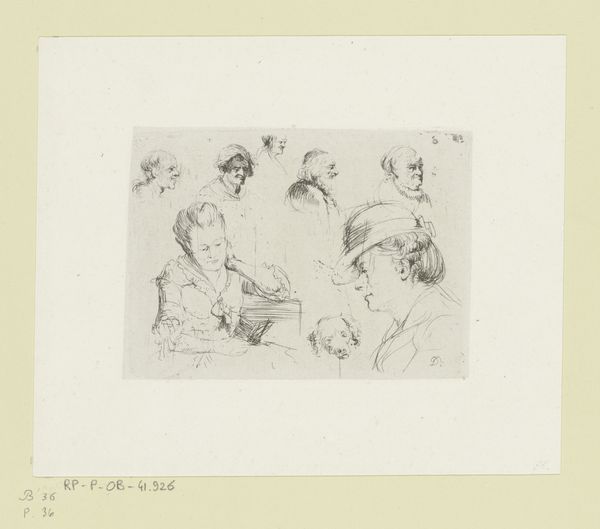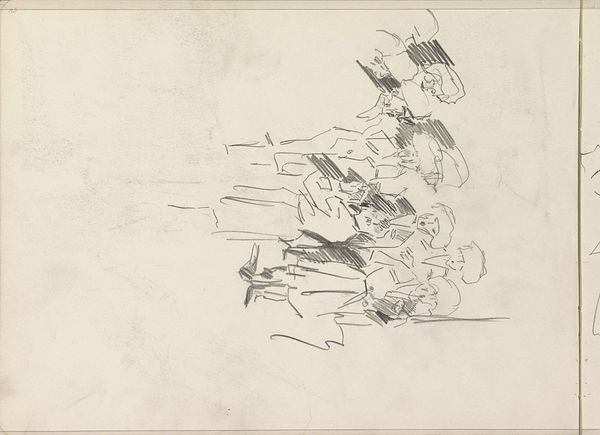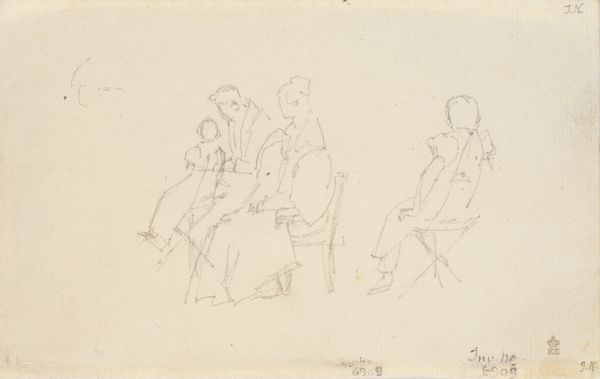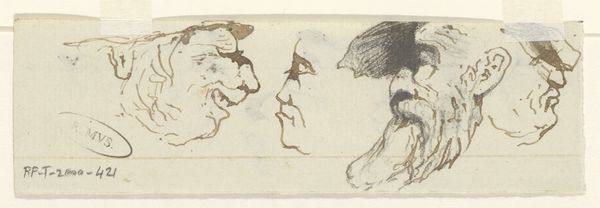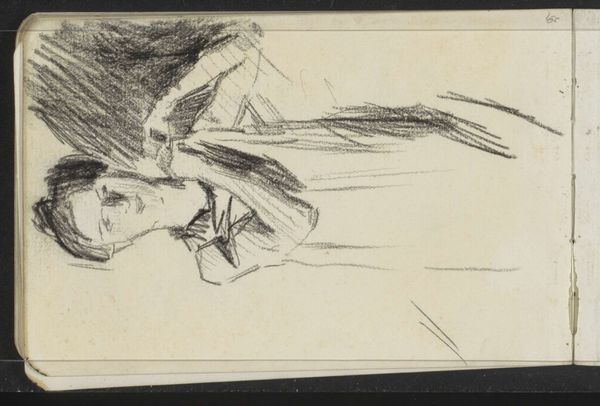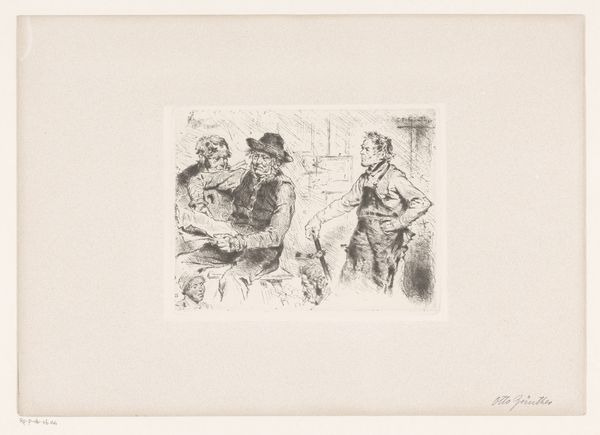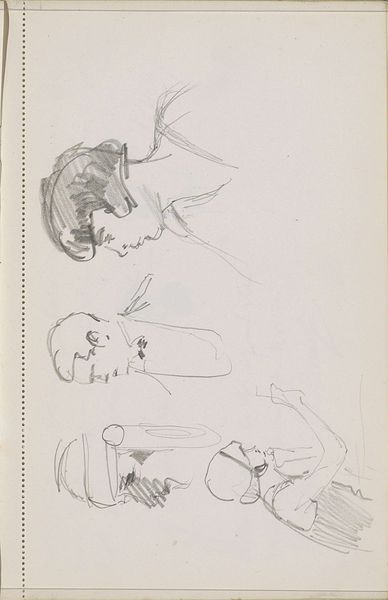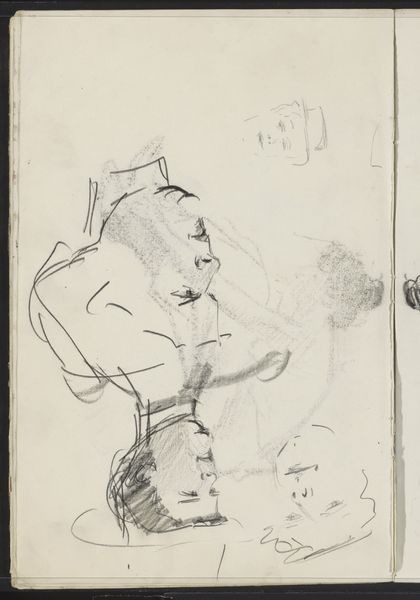
Studieblad met zes koppen, waaronder de portretten van de broers Verveer 1856
0:00
0:00
elchanonverveer
Rijksmuseum
drawing, pencil
#
portrait
#
drawing
#
amateur sketch
#
imaginative character sketch
#
light pencil work
#
quirky sketch
#
dutch-golden-age
#
pencil sketch
#
incomplete sketchy
#
idea generation sketch
#
sketchwork
#
group-portraits
#
pencil
#
academic-art
#
fantasy sketch
#
realism
#
initial sketch
Dimensions: height 54 mm, width 92 mm
Copyright: Rijks Museum: Open Domain
Editor: This is "Studieblad met zes koppen, waaronder de portretten van de broers Verveer" by Elchanon Verveer, made in 1856. It's a pencil drawing, and what strikes me is how informal it feels, almost like a page from a sketchbook. What draws your eye when you look at it? Curator: I see the immediate value of drawing, of pencil on paper. Its accessibility. Consider the materiality of 1856. What does a readily available, cheap medium mean for art production? Who had access? Where were these sketches likely made and consumed? Was it for a broader public, or primarily for the artist’s studio or perhaps a patron's collection? Editor: That's a fascinating way to look at it. I was focused on the subjects of the portraits. I hadn't considered the social implications of using pencil. Were these portraits intended to be studies for something larger, or were they ends in themselves? Curator: That’s exactly where the analysis becomes fruitful. Consider that pencils were increasingly mass-produced during that time, linking them to industrialization and capitalism. And what would have been the nature of that production line? Whose labor was making the artwork possible? Does the ‘sketch’ undermine hierarchies, giving new weight to the means and act of art making? Editor: So, by focusing on the pencil, we move beyond just who is portrayed and think about the social forces that made this drawing possible in the first place. I guess the unassuming nature of a 'simple' sketch might obscure a complex network of social connections. Curator: Precisely. Material analysis helps us question assumptions and explore deeper meanings often missed when simply admiring the aesthetics of a piece. Considering these social relations helps us think differently. Editor: This has really broadened my perspective on the work, from admiring a historical artifact to considering its position within social and economic systems of its time. Thank you.
Comments
No comments
Be the first to comment and join the conversation on the ultimate creative platform.
